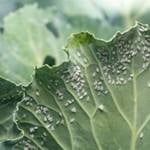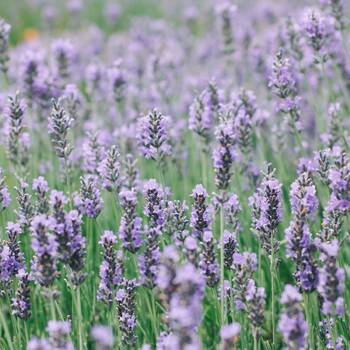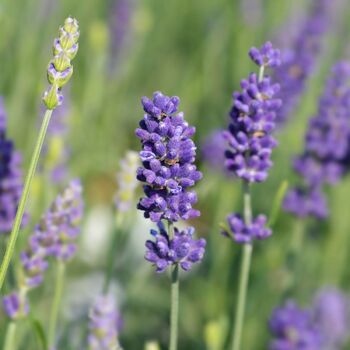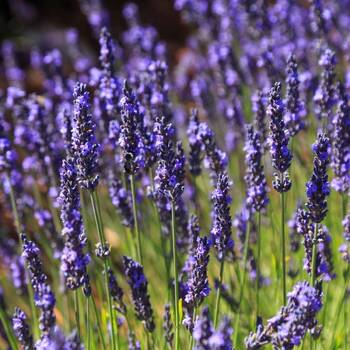
How to Grow Lavender Seeds
Grow Guide #2281
Family: Lamiaceae
Binomial name: Lavandula sp.
Life Cycle: Perennial
This 'How to Grow' guide details everything a home gardener needs to know to plant, grow and care for Lavender (Lavandula sp.).
When to Sow Lavender Seeds
Lavender is a perennial plant that grows year round in most climates. Use the table below to identify the best time of year to sow lavender seeds in your climate.
| JAN | FEB | MAR | APR | MAY | JUN | JUL | AUG | SEP | OCT | NOV | DEC | |
|---|---|---|---|---|---|---|---|---|---|---|---|---|
| Cool | ||||||||||||
| Temperate | ||||||||||||
| Sub-Tropical | ||||||||||||
| Tropical | ||||||||||||
| Arid |
Preparation
Lavender plants are perennial, meaning they live for several years. Choose a permanent position where plants can grow undisturbed by regular digging.
Lavender plants are best grown in full sun. Choose a location that will receive at least 6 hours of full sun each day.
Lavender plants need a very well drained soil. In most cases there is no need to enrich soil with manure or other fertilisers. Prepare soil by weeding it thoroughly and digging it over to loosen it. Keep the area free of weeds until planting. Learn more about preparing soil for planting here.
Lavender plants can be grown in containers. If possible choose a variety that’s recommended for container growing. Use a good quality potting mix and make sure your container is large enough for mature plants; a minimum of 20 litres is recommended for lavender. During the growing season, keep in mind that container grown plants may need additional fertiliser to encourage healthy growth.
How to Sow Lavender Seeds
Optional: Stratifying seeds prior to planting may improve the speed and success of germination. Stratification involves exposing the seeds to a period of cold temperature which for some species helps to break dormancy and spur the seeds to germinate. Read more about stratification here.
Lavender seeds grow best when they are raised in trays or other containers and transplanted to the garden once established.
- Fill trays, punnets or jiffy pots with a good quality seed-raising mix, or use soil starter pellets.
- Sow seeds 0mm deep.
- Keep soil moist but never wet or dry.
- Seeds should germinate in around 14-21 days at a soil temperature of 18-21°C.
- Transplant seedlings to the garden once they have their first true leaves and are large enough to handle (usually 5-10cm tall).
- Plant out, spacing plants 40-80cm apart.
Tip: Seeds of this variety can be slow to germinate. Take note of the expected germination time, be patient and follow the recommended depth and temperature guidelines closely for the best chance of success.
Tip: Lavender seeds are quite small. Handle them carefully to avoid them blowing away or being washed away. Mix seeds with sand or fine potting mix prior to sowing or use a seed dispenser, damp toothpick or tweezers to help space them evenly. Press lightly into the surface after sowing so that the seeds make good contact with the soil. Take extra care to make sure seeds and seedlings don’t dry out. Read more about sowing small seeds here.
How to Grow Lavender
Lavender plants may need watering during the growing season. Water when the soil is dry about 5cm below the surface (test this by scratching away a little soil with your finger). Water deeply in the early morning or late afternoon. Avoid watering the leaves of plants to avoid fungal diseases. Learn more about watering here.
If soil was well prepared no extra fertiliser should be necessary. In poor soil or to give your plants an extra boost, application of a balanced fertiliser or one formulated for fruit and vegetables can be beneficial:
- Apply slow release fertiliser at the recommended rate when transplanting or when seedlings are 5-10cm tall.
- Apply liquid fertiliser at the recommended rate and frequency while plants are fruiting or flowering.
Pinch out the growing tips of lavender plants to encourage denser growth with stronger stems and more flowers. Using sharp secateurs or snips remove the top set of leaves, cutting just above a set of lower leaves.
Deadhead lavender flowers regularly during the growing season. Using sharp secateurs or snips cut fading or dead flowers off just above a set of leaves. Removing old flowers regularly will encourage plants to produce more flowers. Learn more about deadheading flowering plants here.
When plants have finished flowering prune them back to neaten them and encourage strong new growth. Using sharp secateurs or snips, cut individual stems just above a set of lower leaves. Do not prune into the woody base of the branches.
How to Harvest Lavender
Lavender should be ready to harvest in approximately 356 days.
Lavender buds are ready to harvest just before the flowers open. Using sharp secateurs or snips cut the stems just above a set of leaves. Remove leaves from the stems, tie the stems together with string and hang them upside down in a warm, dry place until the buds feel dry. Store the dried buds in an airtight container.
Common Problems when Growing Lavender
Like all plants, lavender is susceptible to some pests, diseases and other problems. Below is a list of the most common problems gardeners encounter when growing lavender plants:
 Aphids are small (2-4mm long) sap-sucking insects that congregate on the new shoots or the undersides of leaves. They can cause leaves to wilt or become discoloured, and also excrete honeydew which can attract ants and other insect pests. To manage aphids, remove them by spraying with a garden hose, apply a soap or alcohol spray, or encourage predatory insects to your garden. Read more about aphids here.
Aphids are small (2-4mm long) sap-sucking insects that congregate on the new shoots or the undersides of leaves. They can cause leaves to wilt or become discoloured, and also excrete honeydew which can attract ants and other insect pests. To manage aphids, remove them by spraying with a garden hose, apply a soap or alcohol spray, or encourage predatory insects to your garden. Read more about aphids here. Whitefly is a sap-sucking insect related to aphids. They are often found in large numbers on the underside of leaves and will swarm in clouds when disturbed. Plants may have yellowing leaves or may wilt, and growth will be slowed. Whitefly can be removed with a garden hose or sprayed with soap spray. Badly affected plants should be destroyed. Attracting beneficial insects that will prey on whitefly can be beneficial. Read more about managing whitefly here.
Whitefly is a sap-sucking insect related to aphids. They are often found in large numbers on the underside of leaves and will swarm in clouds when disturbed. Plants may have yellowing leaves or may wilt, and growth will be slowed. Whitefly can be removed with a garden hose or sprayed with soap spray. Badly affected plants should be destroyed. Attracting beneficial insects that will prey on whitefly can be beneficial. Read more about managing whitefly here.


.png)






